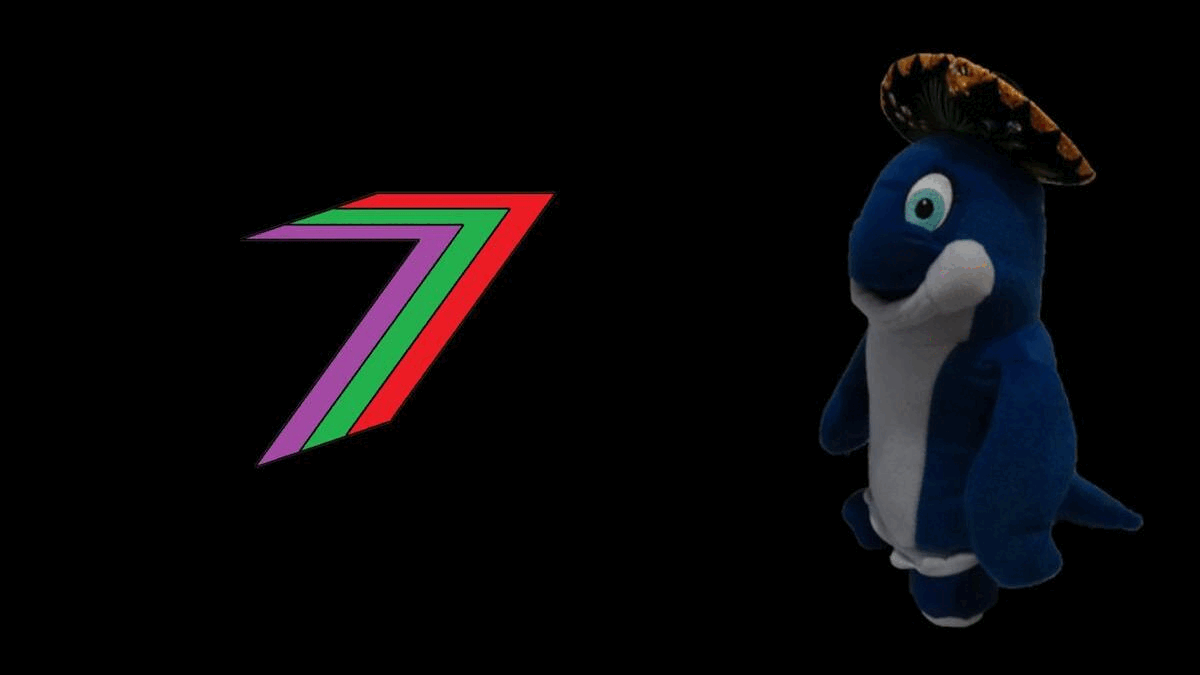Hi Everyone,
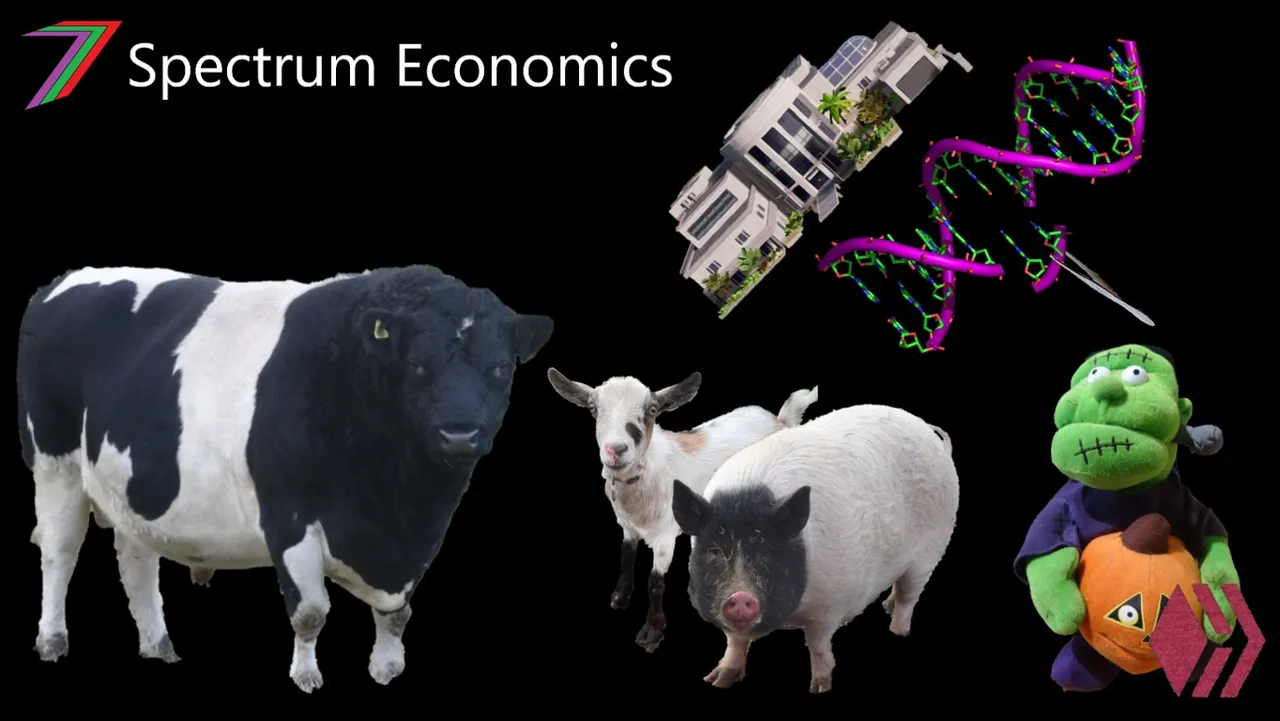
What will be our human legacy? There are plenty of things that make humans unique. What stands out the most to me is human intelligence. Our intelligence has enabled the human species to thrive beyond any other species in our known existence. Our intelligence has enabled us to invent amazing technology. It has enabled us to create beautiful art; these could be paintings, sculptures, music, dance, special effects and many more. It has enabled us to learn and understand ourselves, other people and societies, other species and ecosystems, the broader environment and beyond.
Our intelligence gives us the potential to do amazing things. It is also gives us the potential to do great harm. Some of the damage caused by humans is intentional and some of it is an adverse impact of the progress humans have offered their own species.
Our success as a species has been at the detriment of many other species. Our expansion has led to the destruction of natural habitats around the world. This has led to massive drops in populations of species (both plants and animals) and even the extinction of many others (The Royal Society). However, the success of one species can naturally lead to the down fall of other species. This has happened throughout the history of our planet. This happens for several reasons. This could occur because of local environmental changes that favour one species over another or it could occur because another species has relocated to an environment where it has advantages over the existing inhabitants.
Our dominance as a species has led to our perception of superiority. This superiority does not only exist towards other species but even within our own species. The more successful civilisations have considered themselves superior to the less successful ones. They conquered them, they made them subservient, they attempted to change them to fit their model of civilisation and in many cases even treated them as property. However, their success could be attributed to the earlier application of intelligence to the development of technology and skills. This position of superiority amongst the human species has diminished, as a more homogenous distribution of the application of intelligence can be observed. In regards to other species, this cannot and never will be observed. Therefore, the perception of superiority has remained.
Manipulating the World around us

The greatest feat of our intelligence has been the manipulation of the world to meet our desires. This involves transforming the physical environment to enable us to live in comfortable surroundings, move freely between places, direct resources such as water to places and in quantities we require, and engage with other people for trade or social purposes. We have manipulated the resources on and in the planet by harvesting or mining them, transporting them, converting them, combining them, and redistributing them. We have manipulated the land through techniques such as farming so that the land produces only outputs that can become useful to us; many of them are manipulated through genetic engineering (e.g. GMO foods) to obtain higher yields, obtain larger outputs (fruits and vegetables), increase crop resilience, and reduce costs (FDA). Animals are bred to suit our needs. We even manipulate our own bodies to change our own physical appearance (temporarily with cosmetics or more permanently through surgery).
Much of human manipulation is long-term or irreversible. Urbanised landscapes cannot be easily converted back to a natural environment. Exhausted resources may take decades or longer to replenish and never return to their previous quality. Animals that have changed genetically through breeding will not revert back to their existing form. We could argue that if the changes are beneficial, irreversibility is not a problem. However, we are often ignorant and/or short-sighted about the true impact changes have at the time they are made. Increased knowledge can reduce ignorance but short-sightedness requires changes in perceptions and attitudes. Eventually, through the application of our intelligence, we can begin to realise the broader impacts of the changes we have made as well as gain insight into the broader impacts of any future changes we desire to make.
Manipulating our Environment

There is no doubt that we have benefited from the manipulation of our environment and landscape. The costs of doing so may seem limited in respect to the benefits obtained. Human populations have grown rapidly and there has been mass migration to these urban areas. See Figure 1 for growth in the global population and Figure 2 for the increase in urban populations. Humans have also become more productive and have accumulated, on average, considerably more wealth since the second Industrial Revolution of the 19th and 20th centuries (History) See Figure 4 for changes in world Gross Domestic Product (GDP) and world GDP per capita.
Figure 1: Population Growth

Source: The Industrial Revolution
Figure 2: Population Migration to Cities
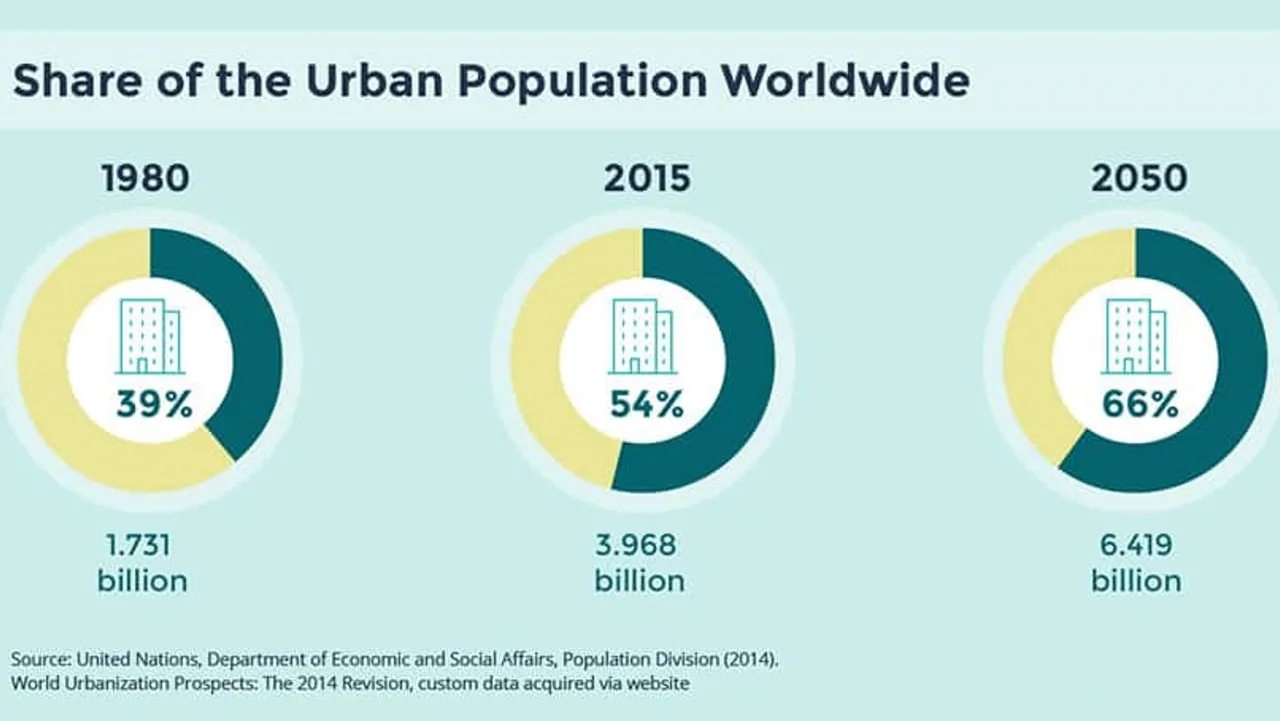
Source: Urbanet
Figure 3: World GDP and GDP per capita trends
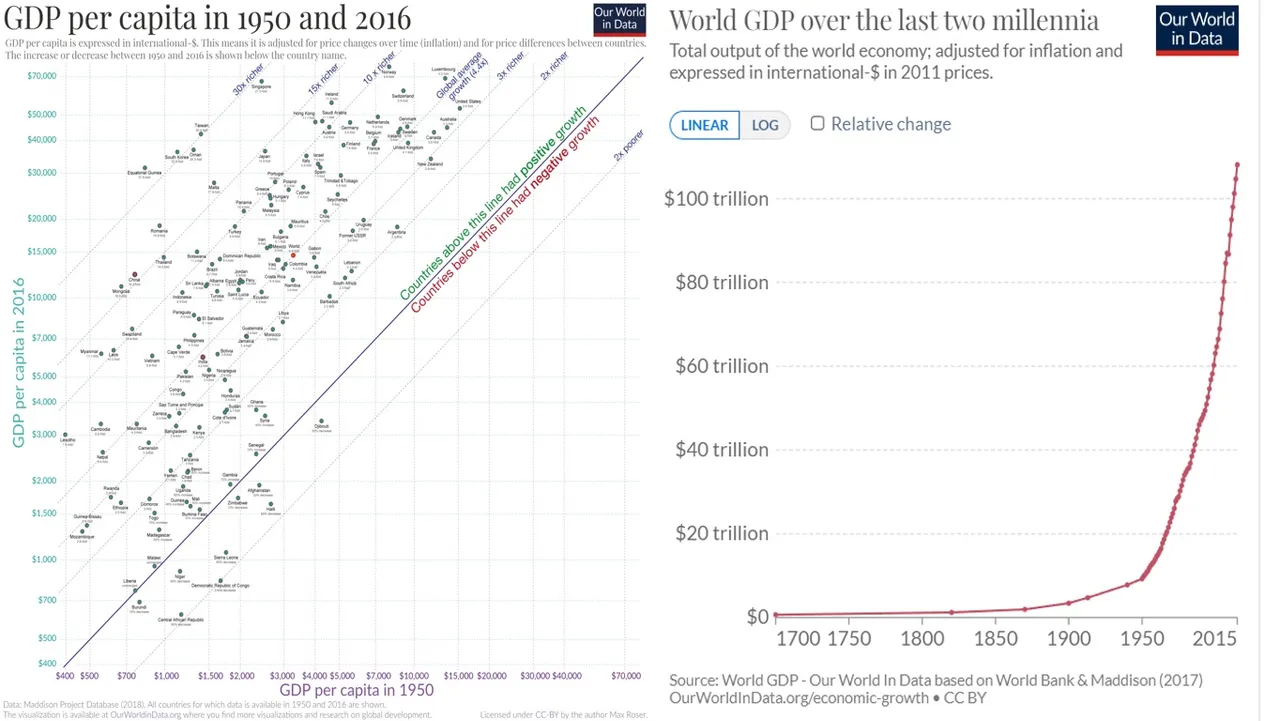
Source: Our World in Data
The above are strong indicators of human success caused mostly by the transformation of the environment to cater for human needs. As human occupied areas expand, costs to humans become more noticeable. There is more pollution of all types (air, water, land, and noise). There is more congestion, thus causing more restrictions on movements. Slums emerge when housing is unable to compete with rapidly rising populations. Crowding leads to more unrest amongst people; this can be seen through higher crime statistics in urban areas (Law Library). Higher population densities creates waste disposal and sanitation problems for unprepared rapidly growing cities. This leads to diseases and health problems (TeachersCollegesj).
As these problems affect people directly, there are incentives to fix them. Even though, most problems are not completely eradicated, many cities have greatly improved from their early 20th century versions. Problems of human expansion extends to beyond just humans. Other species also suffer consequences. Their habitats are not only encroached on by human presence but the areas beyond direct human activity are affected. They can become polluted with waste from human activities. This waste poisons both plants and animals. Human structures (e.g. dams) and activity affects the distribution of water. Some areas may become flooded while others are suffer droughts (World Atlas). A serious direct disruption to just some species in an ecosystem can cause widespread damage to the entire ecosystem; everything in nature is interconnected in some way.
A few animals have managed to thrive under these new circumstances. Some mammals such as rodents thrive (population is able to increase rapidly) because of food wastage, easy to navigate city environments, and less predators. However, they are likely to have a lower quality of life and die earlier than their rural counterparts (Legacy Rodent Control). Pigeons are also drawn to cities and seem to thrive. They are attracted to the tall buildings, which to them, resemble their natural habits of cliff tops. People are also inclined to feed them, thus giving them a good food supply (The Guardian). Even the species that are able to thrive in human inhabited environments suffer when humans decide that they are not wanted. They are often poisoned and killed in large numbers.
Direct Manipulation of Other Species
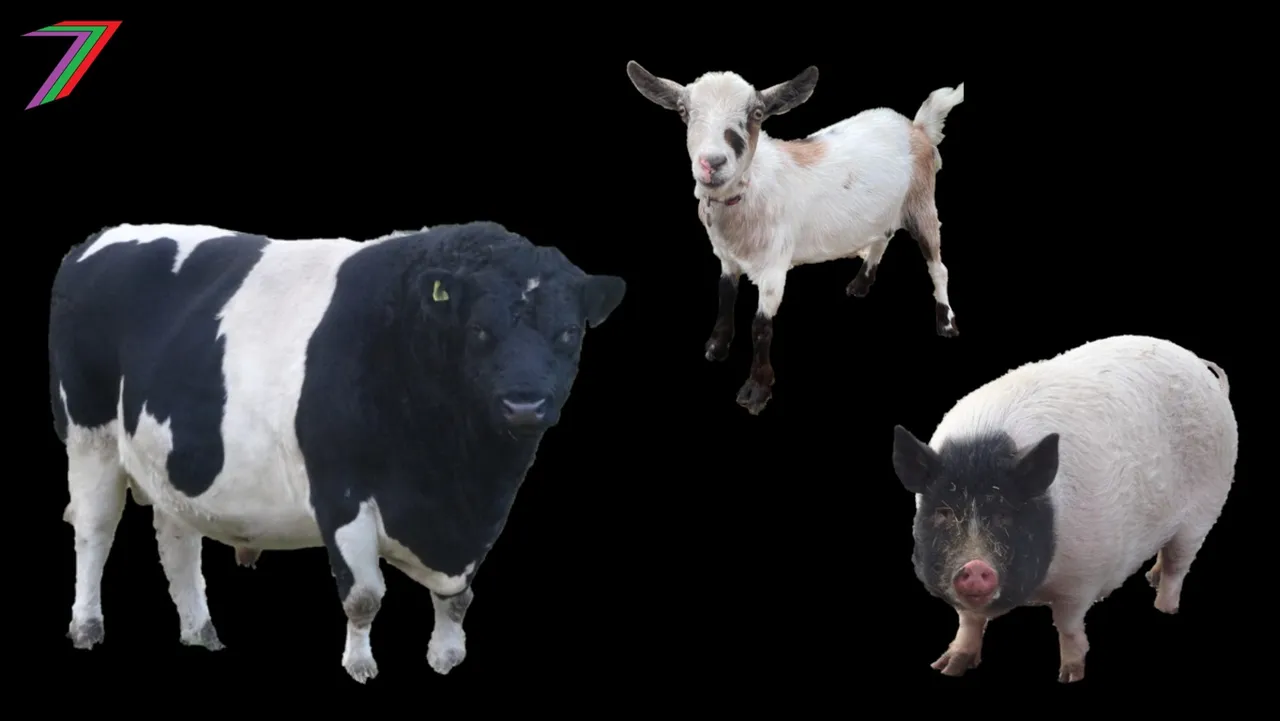
Humans have not just manipulated their physical environment for their own benefit. They have directly manipulated other species with in it. Some species of animals have certain traits that humans find attractive. Such traits could include.
- Rapid maturation and/or size (e.g. rapidly produced higher quantity of meat or quicker breeding).
- Easy to breed and raise (e.g. reduce costs).
- High quantity of secretions (e.g. more eggs, milk and honey).
- Meat and secretions are favourable to human taste (e.g. can be turned into meals people are willing to eat).
- Higher intelligence (e.g. can understand basic human commands)
- More closely biologically related to humans (e.g. more relevant for testing human products).
- Possess physical strength but in most cases not aggressive (e.g. can be used to transport resources or participant in sports).
- Possess useful physical traits like thicker fur/wool or tough skin (e.g. to make clothing).
Humans tend to be attracted to mid-sized to large mammals. These include cattle, sheep, goats, pigs, horses, llamas, and reindeer. These mammals are often referred to as livestock and have become domesticated through human captivity. We could also consider some types of birds such as chickens, turkeys, geese, and ducks as livestock. Below are a list of animals typically referred to as livestock and the purpose of their breeding in captivity.
Figure 4: Examples of Animals considered as Livestock
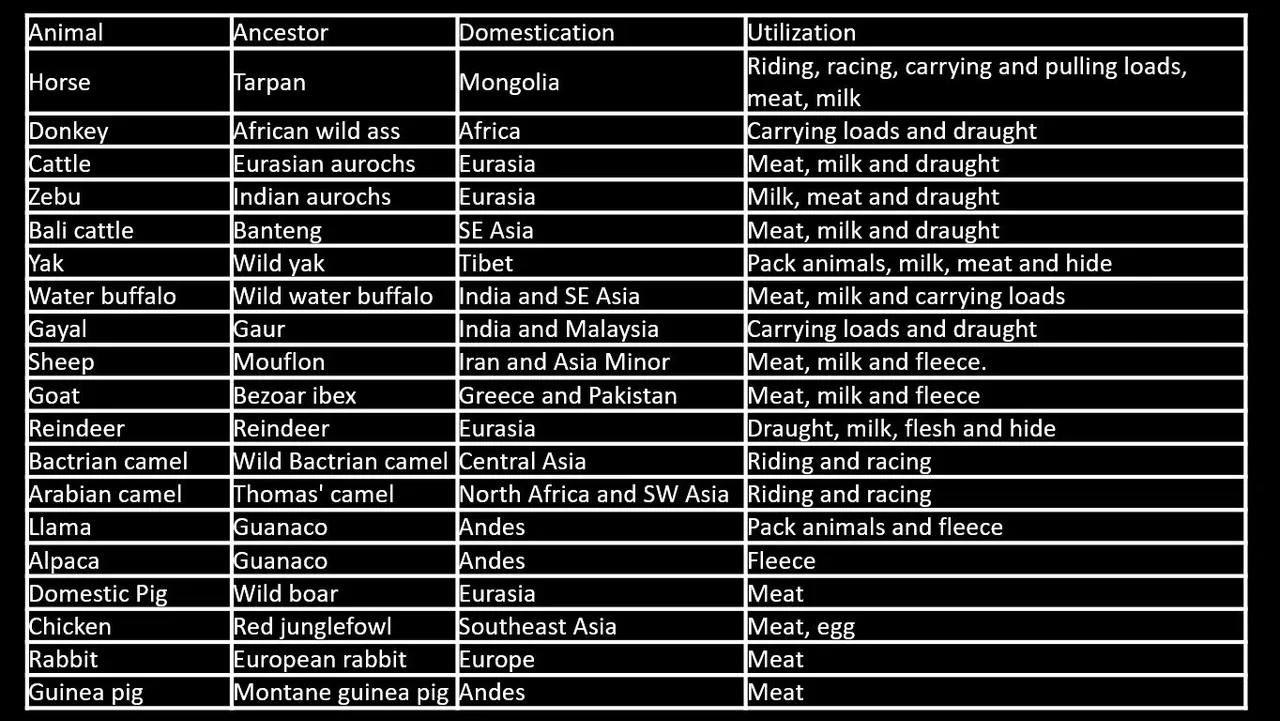
Source: Wikipedia
Note: We could also argue that honey bees are treated as livestock based on how they are bred as well as how they are utilised (Sustainability Times).
Animals that have been domesticated and become livestock have many of the traits desired by humans. However, the original wild versions of many of these animals were not so well endowed in these traits as the modern versions. Humans have not just bred them in captivity to increase their population. They have bred them in captivity to alter them so that they are more suited to our needs. Some of them are bred to be bigger, to secret more milk or eggs, less prone to disease in an artificial environment, to be faster or physically stronger, or have thicker fur or wool. Figure 4 contains the most likely ancestors of each domesticated animal. Several of these are now extinct (e.g. Tarpan and Aurochs). While others have become endangered (e.g. Guanaco and Mouflon). Below are the wild versions of some of our domesticated animals.
Guanaco (ancestor of llamas and alpacas) and Bezoar Ibex (ancestor of goats)
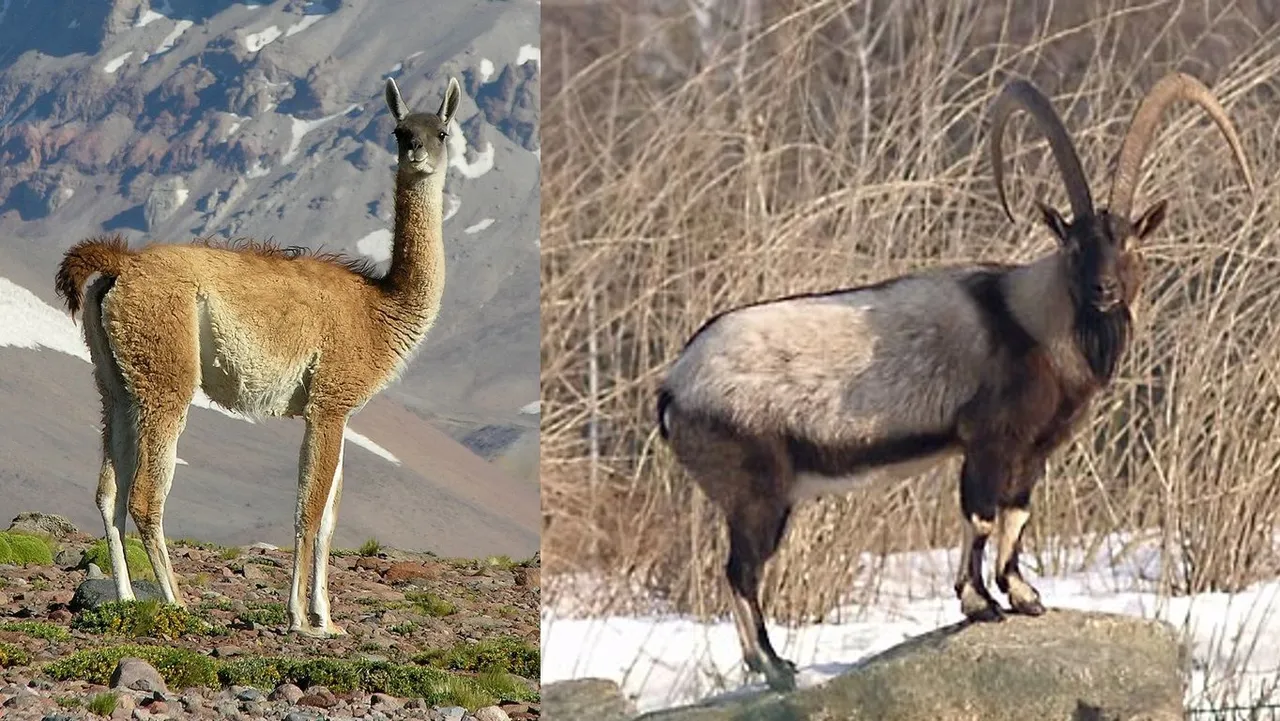
Source: Wikipedia and Wikipedia
Indian Aurochs (ancestor of Zebu, type of cattle)
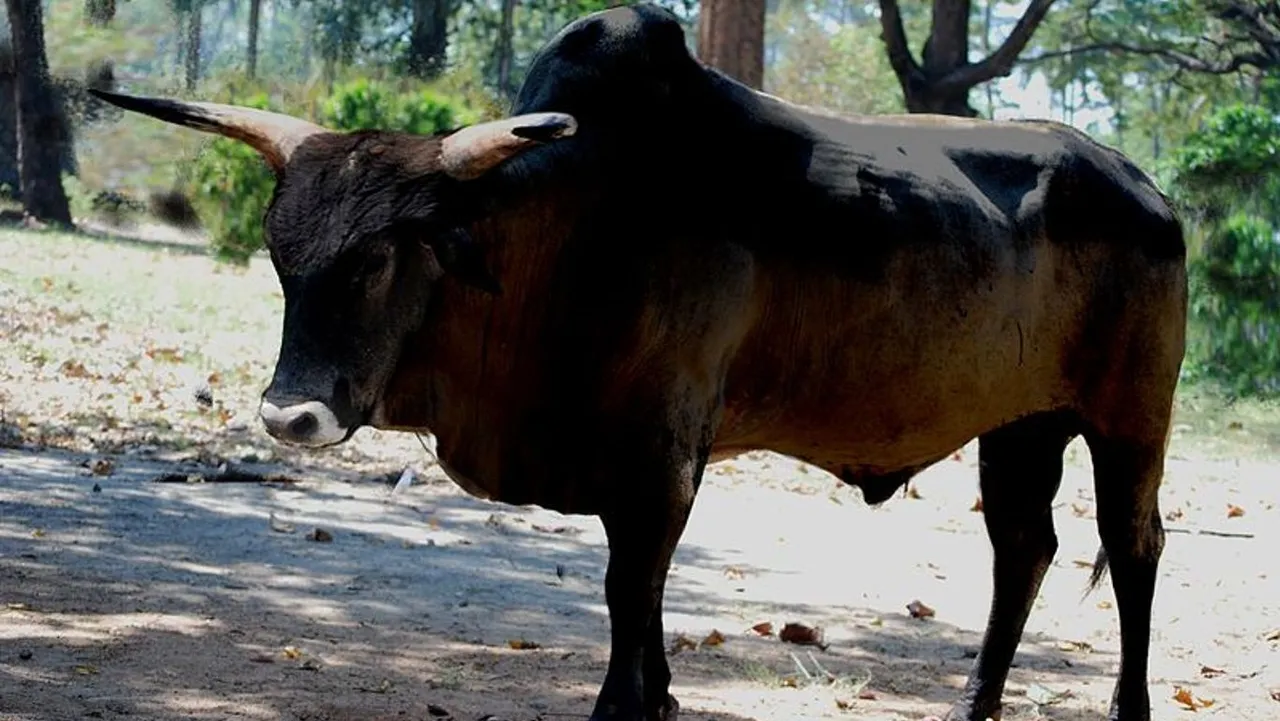
Source: Wikipedia
Wild Boar (ancestor of domesticated pigs)
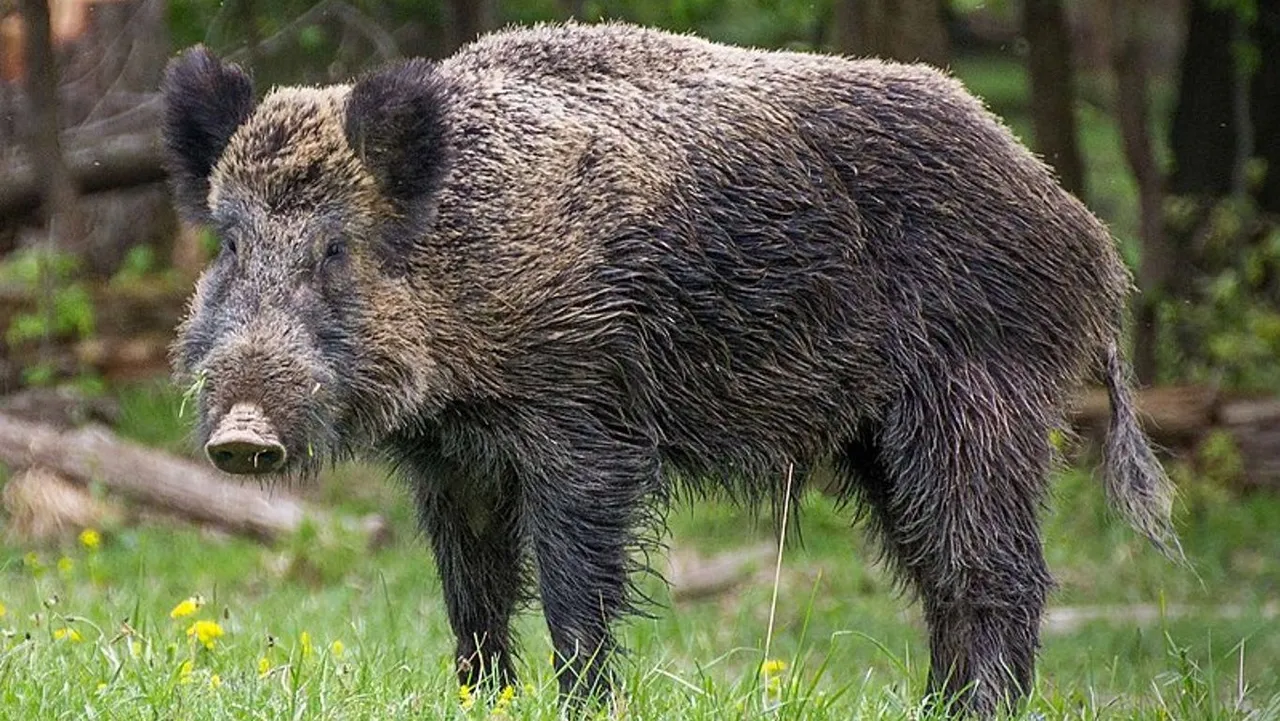
Source: Wikipedia
Mouflon (ancestor of sheep)
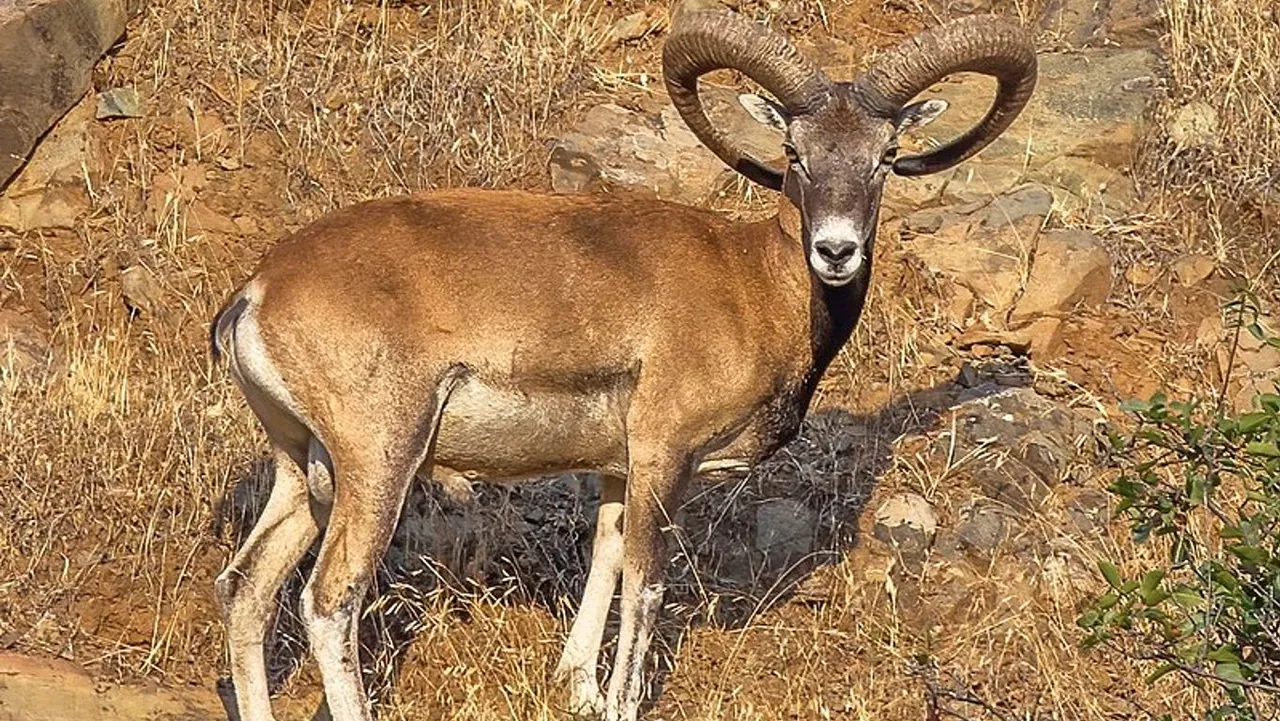
Source: Wikipedia
Tarpan (ancestor of horses)
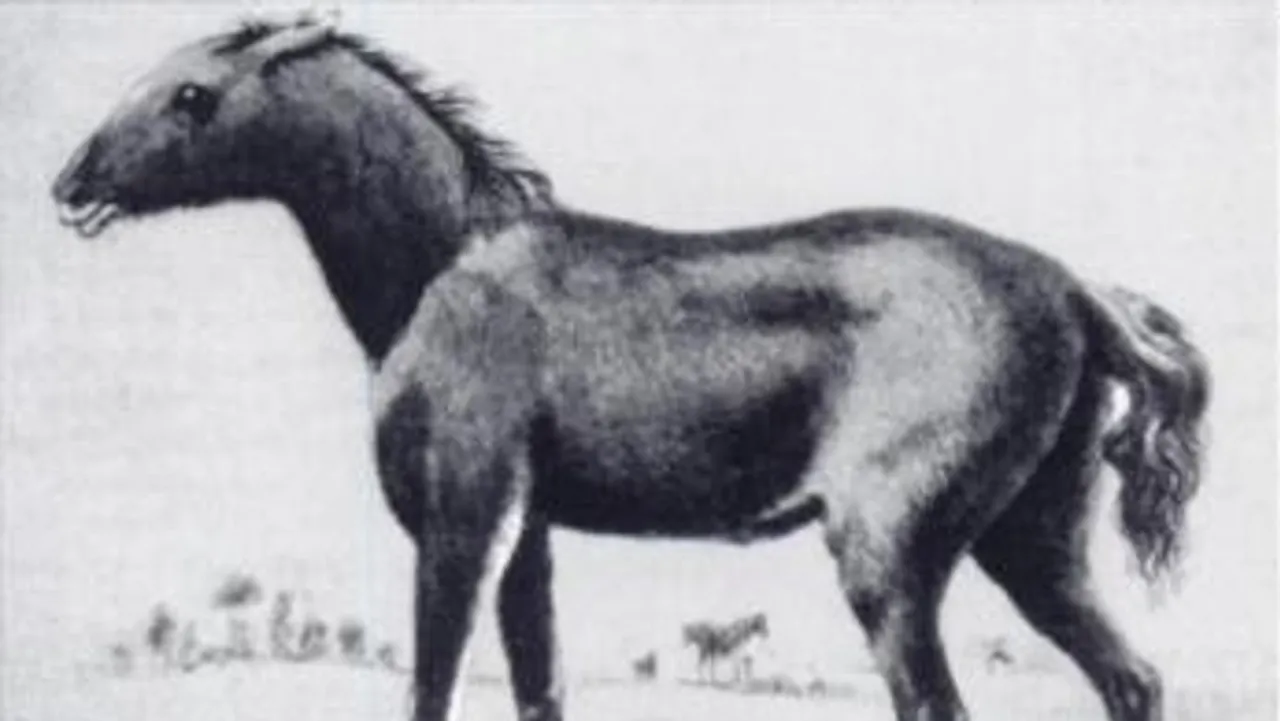
Source: Wikipedia
Red Junglefowl (ancestor of chickens)
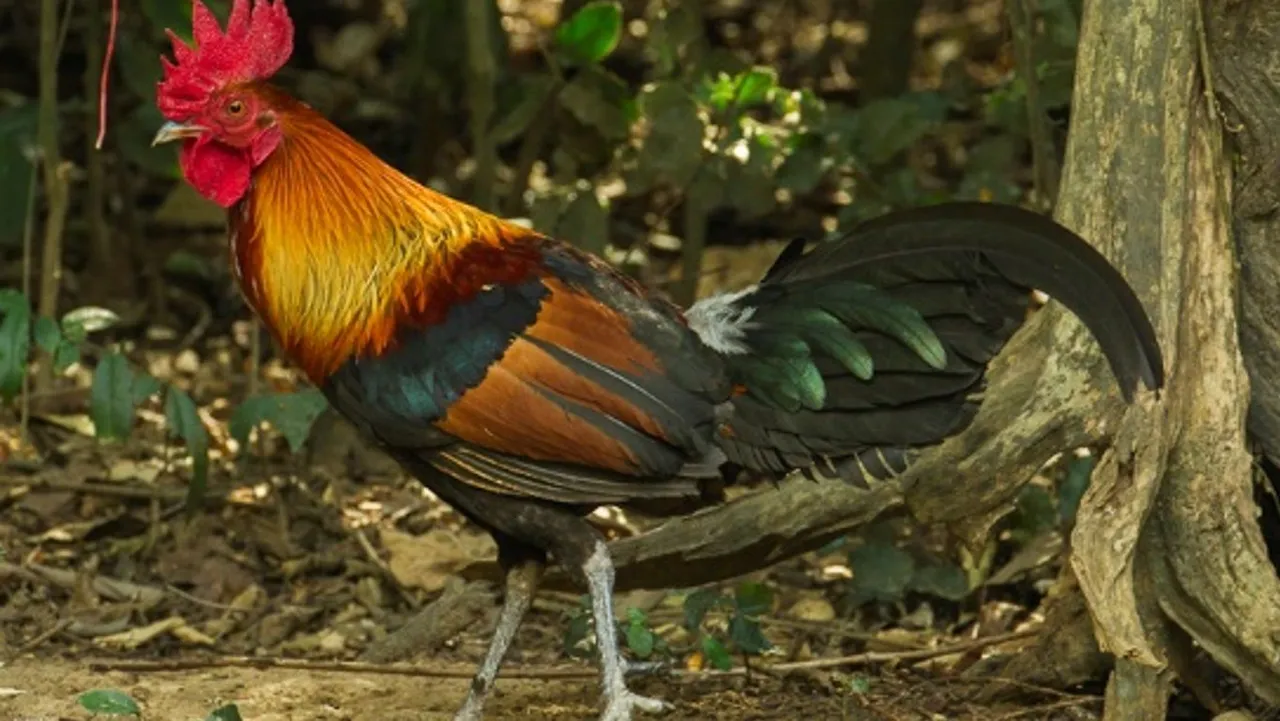
Source: Wikipedia
The main motivation for altering animals through breeding is profit. The aim is increase revenue while decreasing costs. The profit motive comes at the expense of the animals. They are force bred, live in cramped conditions, exposed to disease, fed for rapid growth, and most are eventually killed as either the product (e.g. meat, skin, and fur) or because they are no longer as productive.
Breeding for human desired traits comes at a cost to the animals. Breeding can make them more vulnerable to certain health conditions such as heart conditions, respiratory illness, and cancer. There are many examples of different dog breeds that suffer various conditions linked to their breeding (discussed later in post). Sometimes traits that animals have been bred for create problems for them as the rest of their bodies are unable to handle the developed trait. For example, some animals become too heavy for their bone structures. For most livestock, defects caused through breeding are not considered a significant problem as the animals do not live long enough to die or become dysfunctional because of them.
Chickens
Chickens are bred for their meat or to lay eggs. Chickens that are bred to for their meat are referred to as broiler chickens. They grow very large very quickly. They are often so large that their bodies are unable to adequately support their weight. Chickens that are bred to lay eggs are referred to as layer chickens. They do not grow as quickly or as large as broiler chickens. They are bred to lay as many eggs as possible (NavFarm).
In the second half of the 20th century, the average size of broiler chickens approximately quadrupled (United Poultry Concerns). See Figure 5 for size comparisons of chickens past and present. The diagram below Figure 5 contains more information about the Ross 308 broiler chicken.
Figure 5: Sizes of Chickens
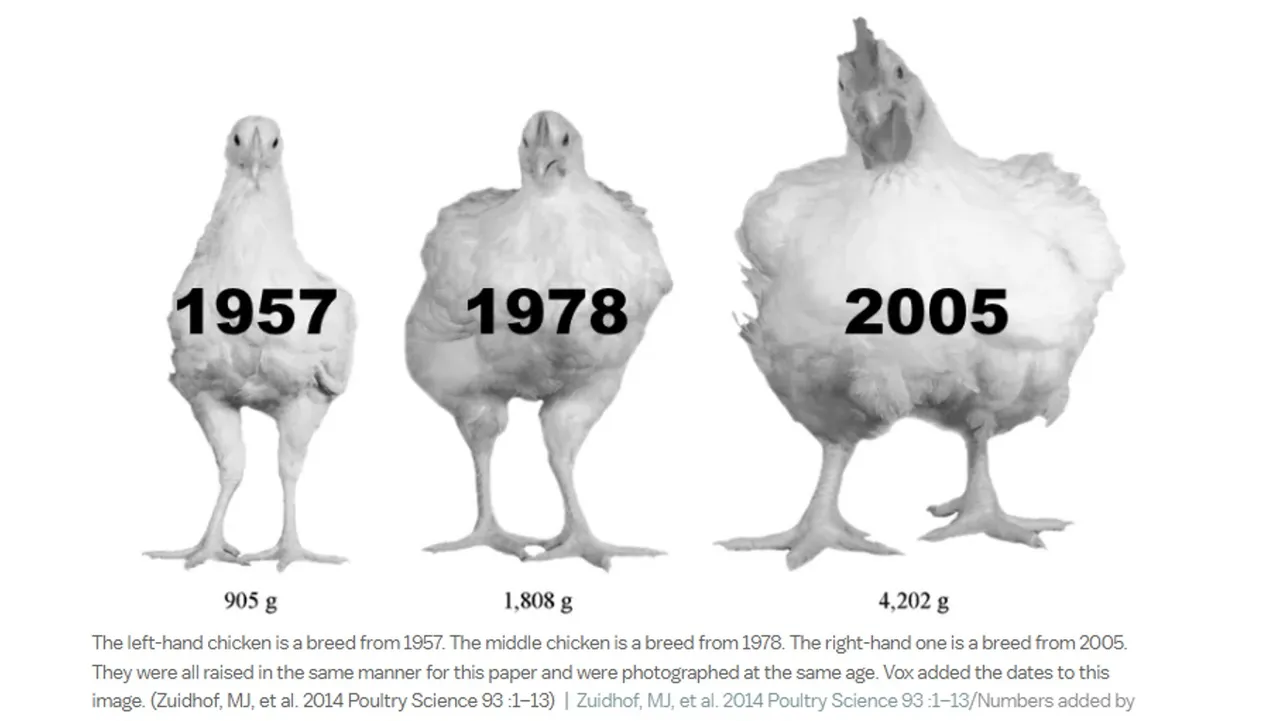
Source: Vox
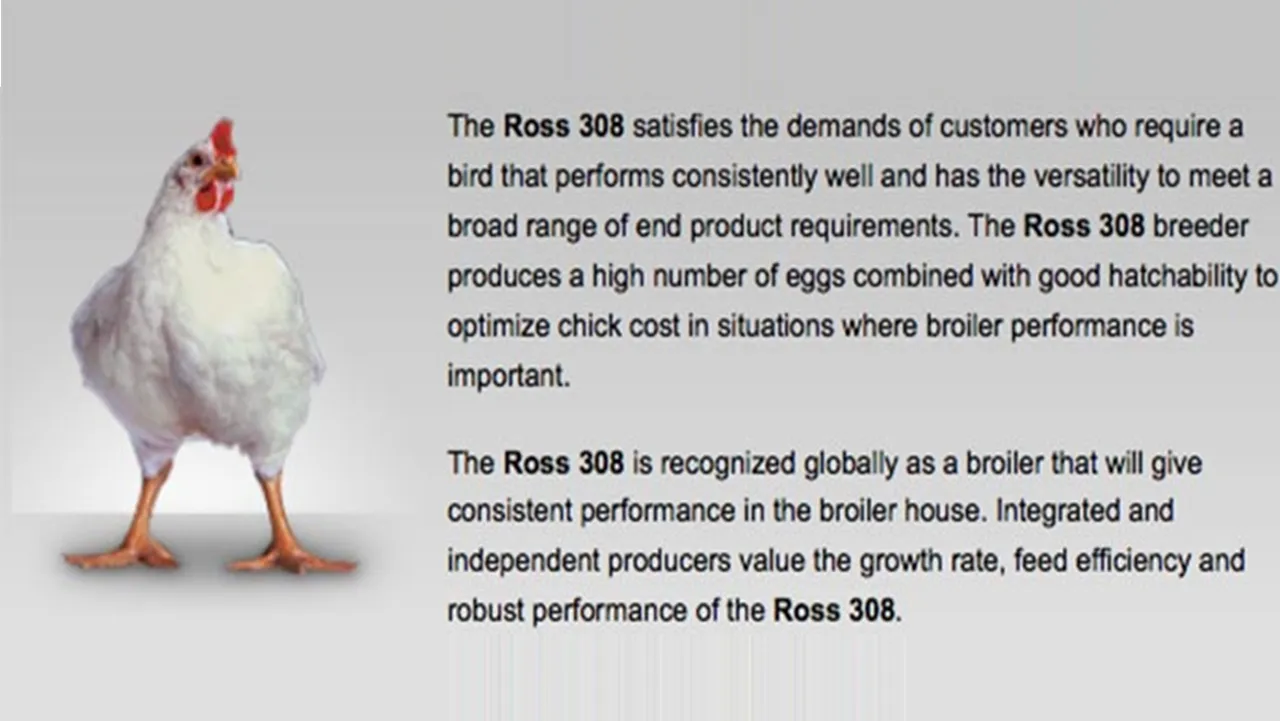
Source: United Poultry Concerns
Opinion: Description seems more fitting for an appliance than an animal.
The number of eggs laid by each layer chicken is consistently increasing. Over the past 30 years, egg production per chicken has increased by approximately 20%. These chickens lay an egg almost every day. The Red Junglefowl (wild ancestor of the modern chicken) only lays between 10 and 15 eggs in a year (Open Sanctionary). See Figure 6 below for the average number of eggs laid per chicken in the USA.
Figure 6: Eggs laid per Chicken in the USA (1983 to 2016)
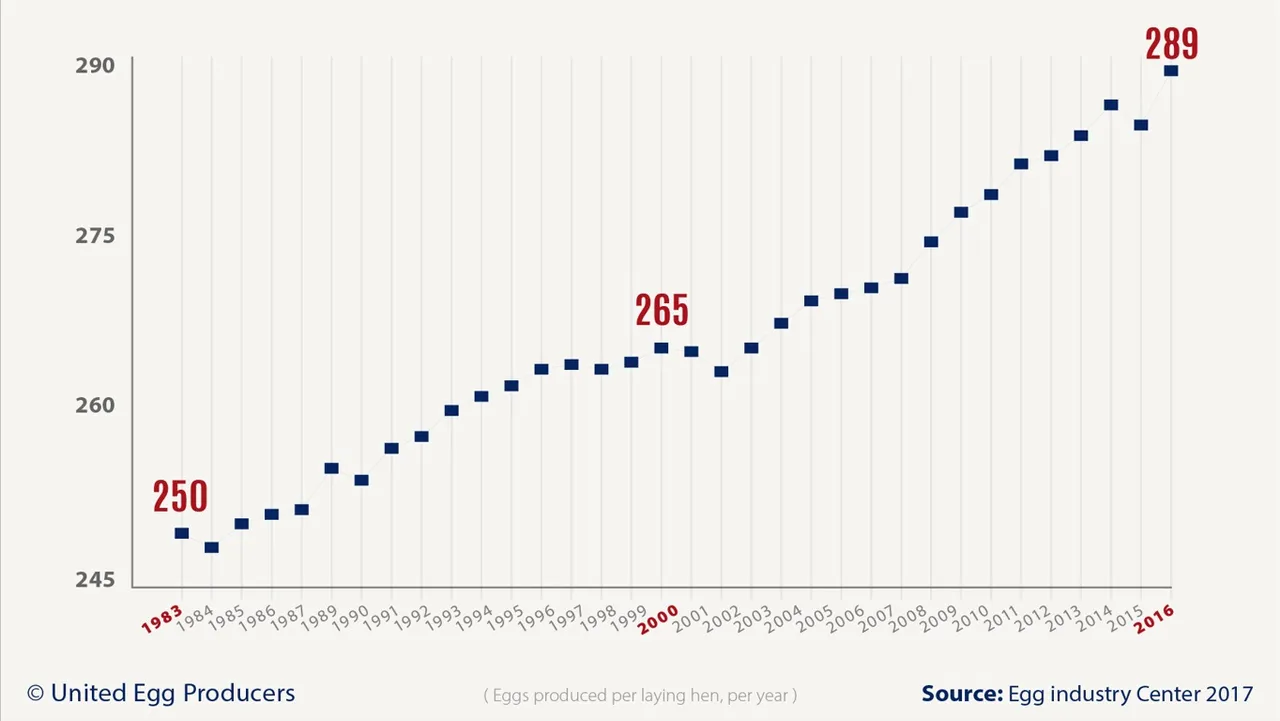
Source: United Egg Producers accessed 19 January 2023; link is updated with new statistics.
Cattle
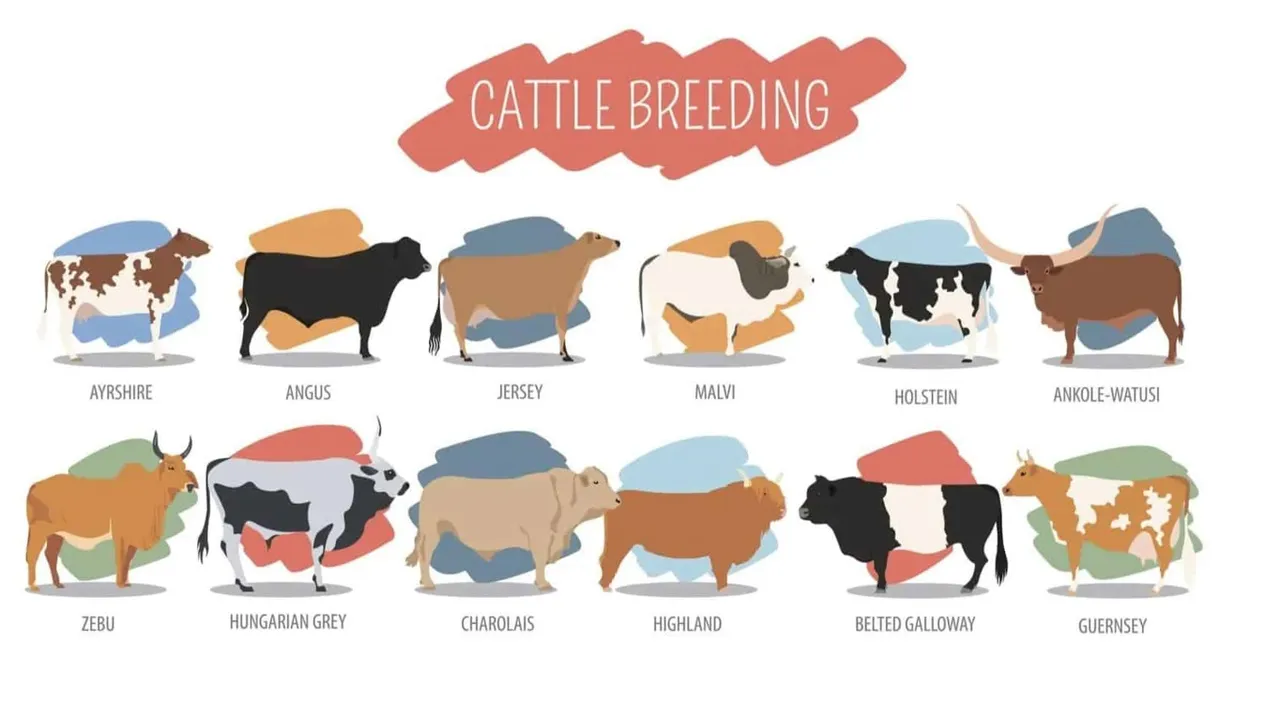
Source: NayTurr
Cattle are bred for their meat, for their hides, or to produce milk. Cattle that are bred for their meat are referred to as beef cattle. Beef cattle have many different colours. They can be red, black, white, grey, brown, yellow, or a mixed combination of these colours. Beef cattle produce only enough milk to feed their offspring (1 to 2 gallons a day). They are bred to build muscle and store fat. They are usually shorter but broader than dairy cattle (Texas Table Top). Beef cattle have grown bigger over the past few decades. According to the Country Journal. Cows were 30% bigger in 2015 than they were in 1975.
Knickers the Giant Australian Steer
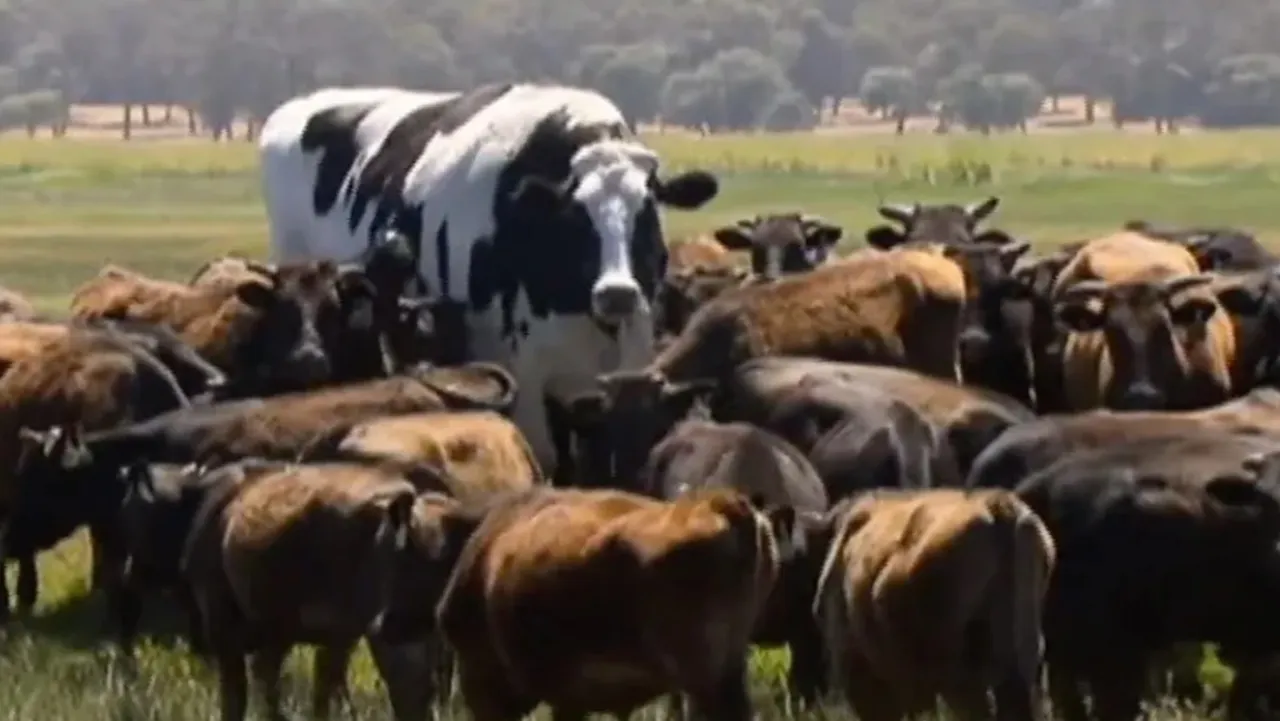
Source: The Verge
Dairy cattle also come in several different colours such as brown, tan, silver, gold and white. The most common dairy cattle is the black and white Holstein. Dairy cattle are as big as beef cattle but have a taller more slender build. The female cattle (cows) are bred for producing milk. The male cattle are normally killed at birth as farmers have no use for them (Dairy Australia). The cows produce large quantities of milk (average of 7 to 9 gallons a day). This milk has a high fat content. When dairy cows are unable to produce such high quantities of milk, they are killed and used as a lower quality meat (Pet Keen).
The quantity of milk produced by a dairy cow has been consistently increasing over the past hundred years. It has now increased by approximately 4 times what it was at the start of the 20th century (the previous quantity equates to roughly the amount of milk produced by modern beef cows). See Figure 7 for the increase in the amount of milk production for 100 years between 1900 and 2000. See Figures 8 and 9 for the increase in milk production from 2005 to 2020.
Figure 7: Milk production per Dairy Cow (1900 to 2000) in kilograms
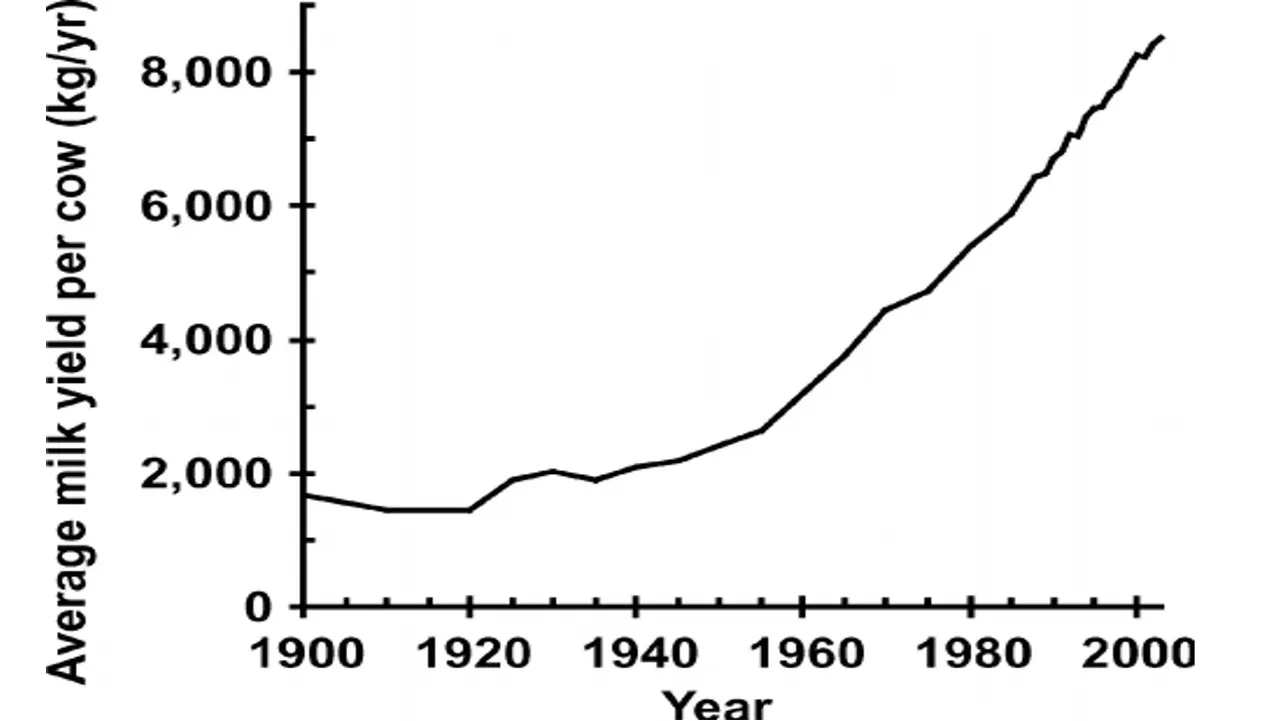
Source: ResearchGate
Figure 8: Milk production per Dairy Cow (2005 to 2013) in pounds
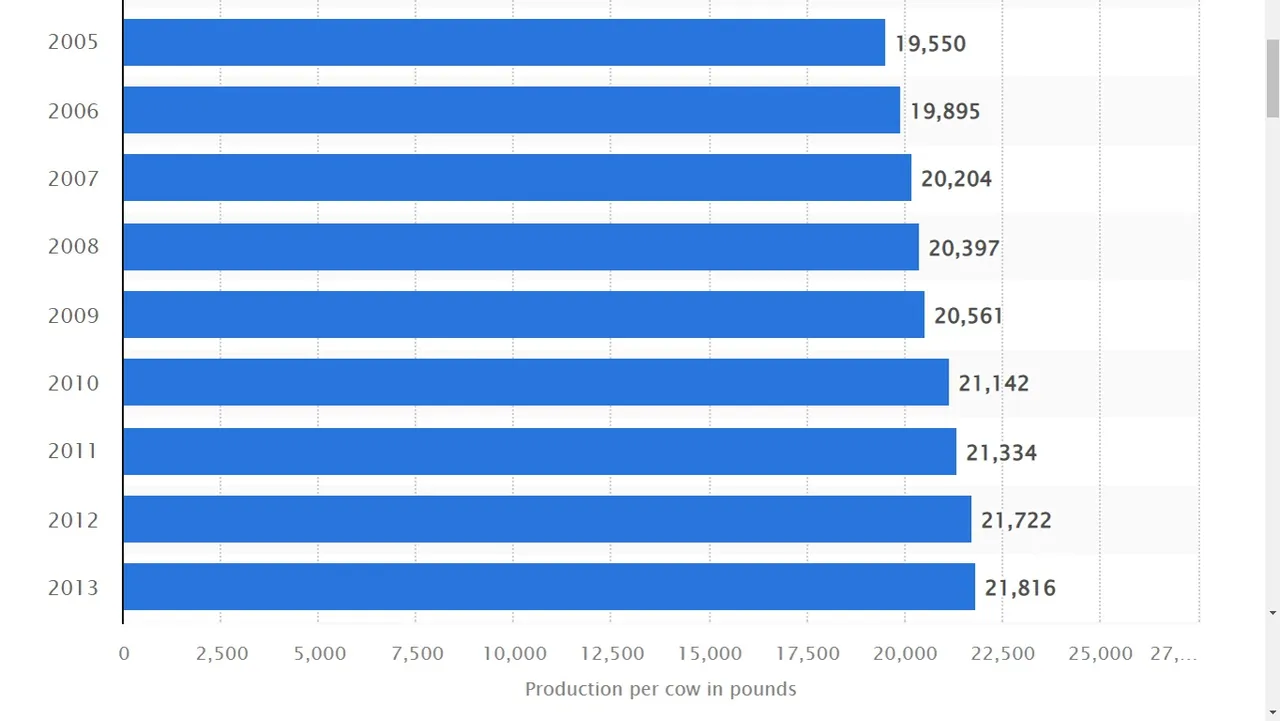
Figure 9: Milk production per Dairy Cow (2014 to 2022) in pounds
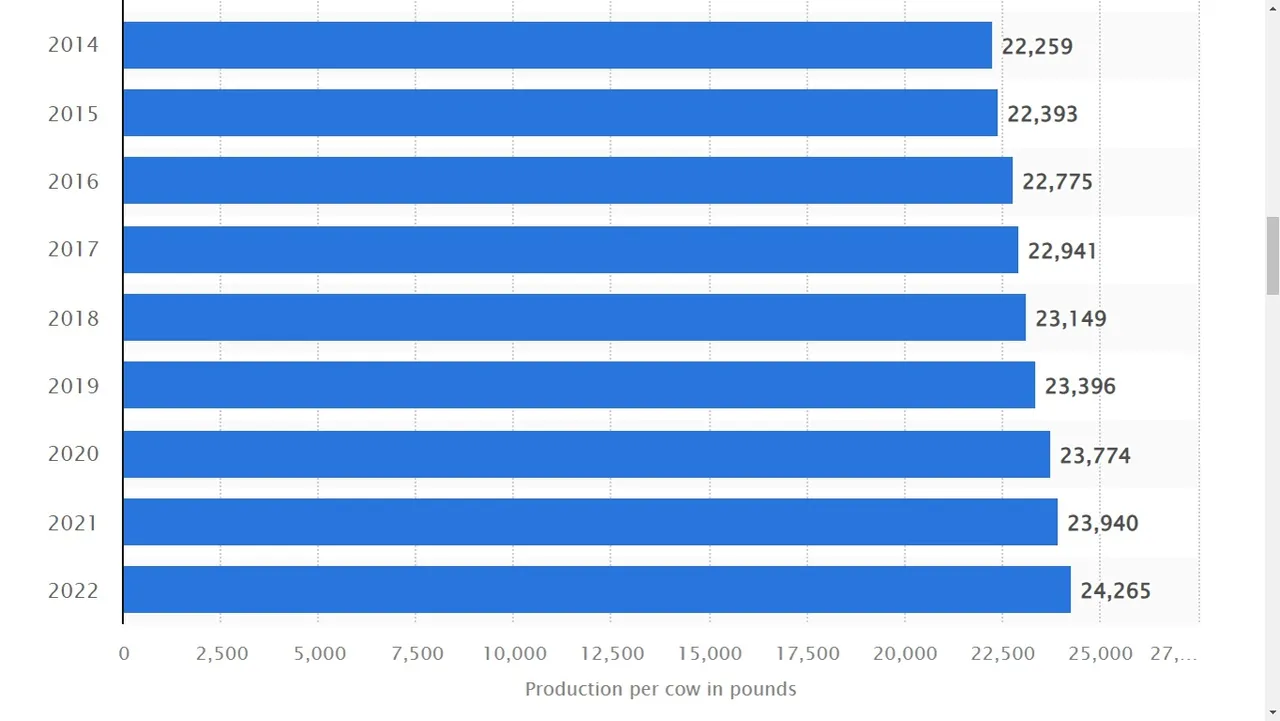
Source: Statista
Pigs

Source: A to Z Animals
Pigs are typically bred for just their meat. However, there is a growing interest in keeping pigs as pets. Pigs bred for meat are bred to be large and heavy. In China, pigs ae being grown to about the size of polar bears. These pigs weigh more than 1,100 pounds (Insider). The picture below shows a sample of such a pig.
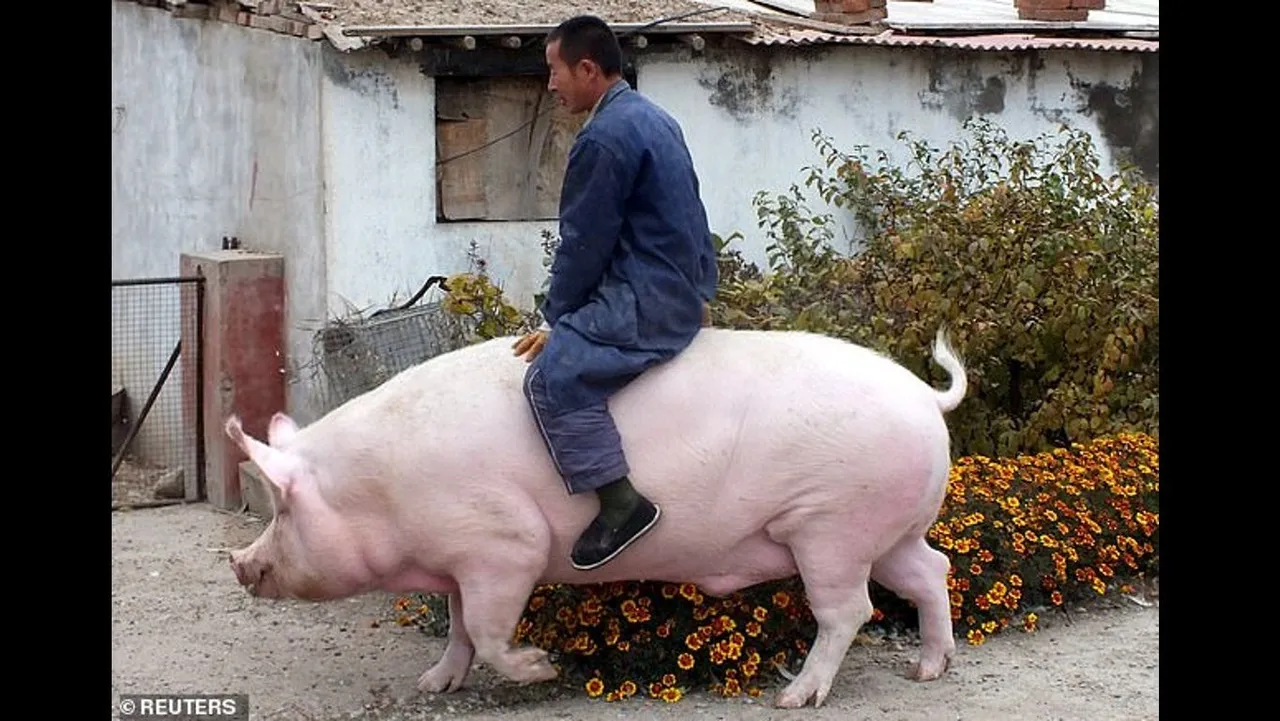
Source: Daily Mail
Pigs have been altered through breeding but soon a vast number of them could be altered genetically. In 2020, the Food and Drug Administration (FDA) approved Genomic Alteration in pigs to eliminate alpha-gal sugar on the surface of pigs’ cells. This is to cater for people who are allergic to alpha-gal sugar. This approval could pave the way for genetic modifications and could be used to justify genetic modification to other animals.
Pigs are also being genetically modified to become potential transplant donors for humans. These genetic modifications are made to prevent human and baboon (test species) immune systems from rejecting these organs. Laboratories have begun experimenting with transplanting pig hearts into baboons. In China, insulin-producing pancreatic islet cells from gene-edited pigs have been transplanted into people with diabetes. In South Korea, pig corneas could soon be transplanted into people. In the US, pig-skin could soon be used for covering wounds for people with severe burns (MIT Technological Review).
Pigs bred to be pets are bred to be much smaller than pigs bred for food. They need to be smaller so that people can keep them on their properties or even in their homes. Experimental breeding began around 1998. After about 9 years of selective breeding of pigs with small features such as short legs and short spines, new unofficial breeds of mini-pigs were formed. These are not official breeds. Breeders continue to pair the smallest of the species to continue to reduce their size. Breeding to reduce size increases the likelihood of health complications that could lead to shorter life expectancy (Per Pig World).
Sheep
Sheep are bred for meat, milk, or wool. Some breeding is for just one type of product and other breeding is to produce multiple products. Figure 10 shows the breeds of sheep for wool (fine or long), meat, both meat and wool, milk, and other speciality purposes.
Figure 10: Sheep breeds for meat, wool, and dairy
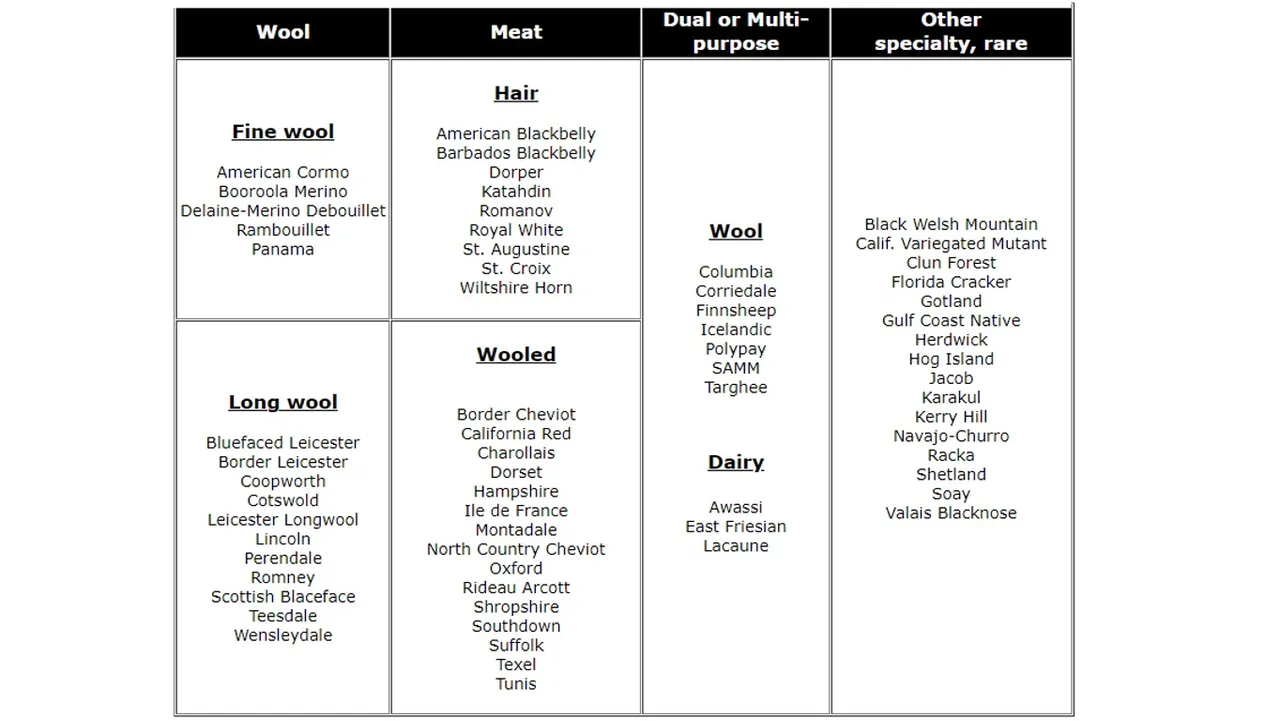
Source: Sheep 201
Sheep wool and hair growth is rapid and continuous. If it is not shorn it will grow continuously. In 2015, a sheep was found wondering in Australia. It was claimed that the sheep had not been shorn in 5 years. His wool had become incredibly long and was beginning to pose a serious health risk to him. See picture below.
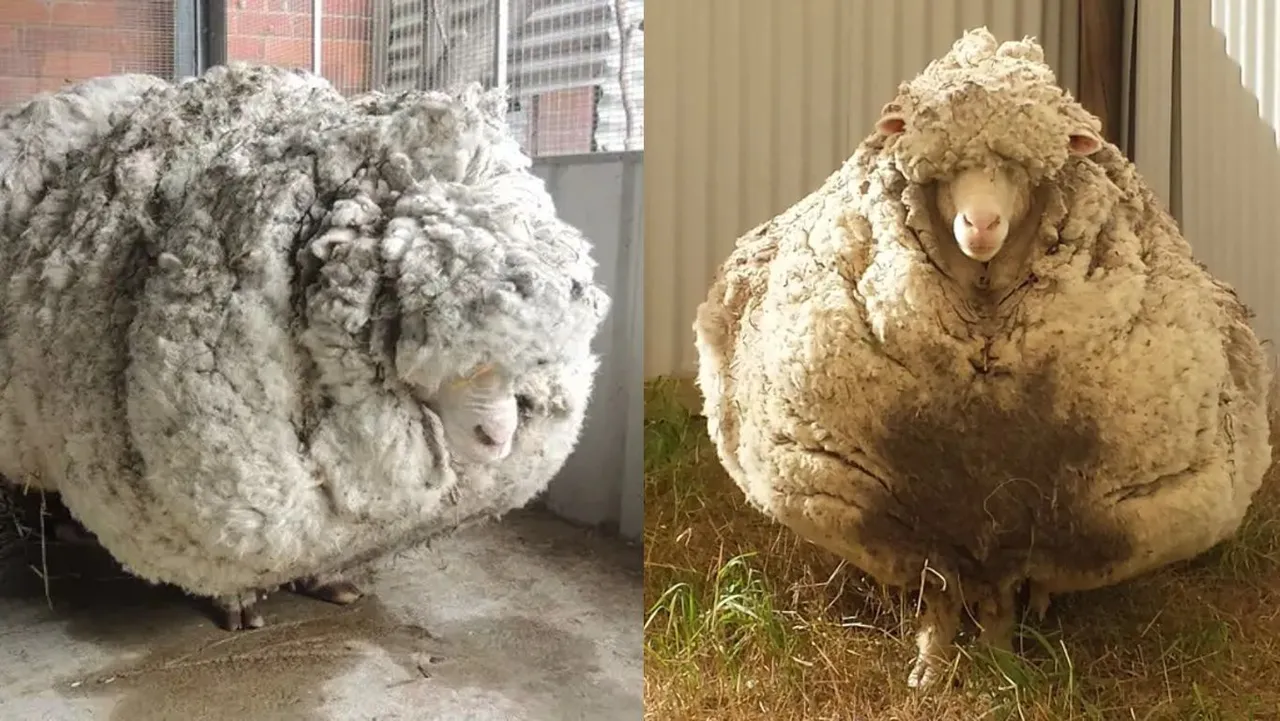
Source: BuzzFeed News
The wool of sheep grows to this extreme length because of breeding. Wild sheep only produce enough wool to keep them warm in the winter. When the weather becomes warmer, they shed the excess wool. Sheep that are bred to produce more wool are dependent on humans to shear them. Shearing can be a very unpleasant experience for sheep. It can cause cuts and infections (Vegan News).
Race Horses
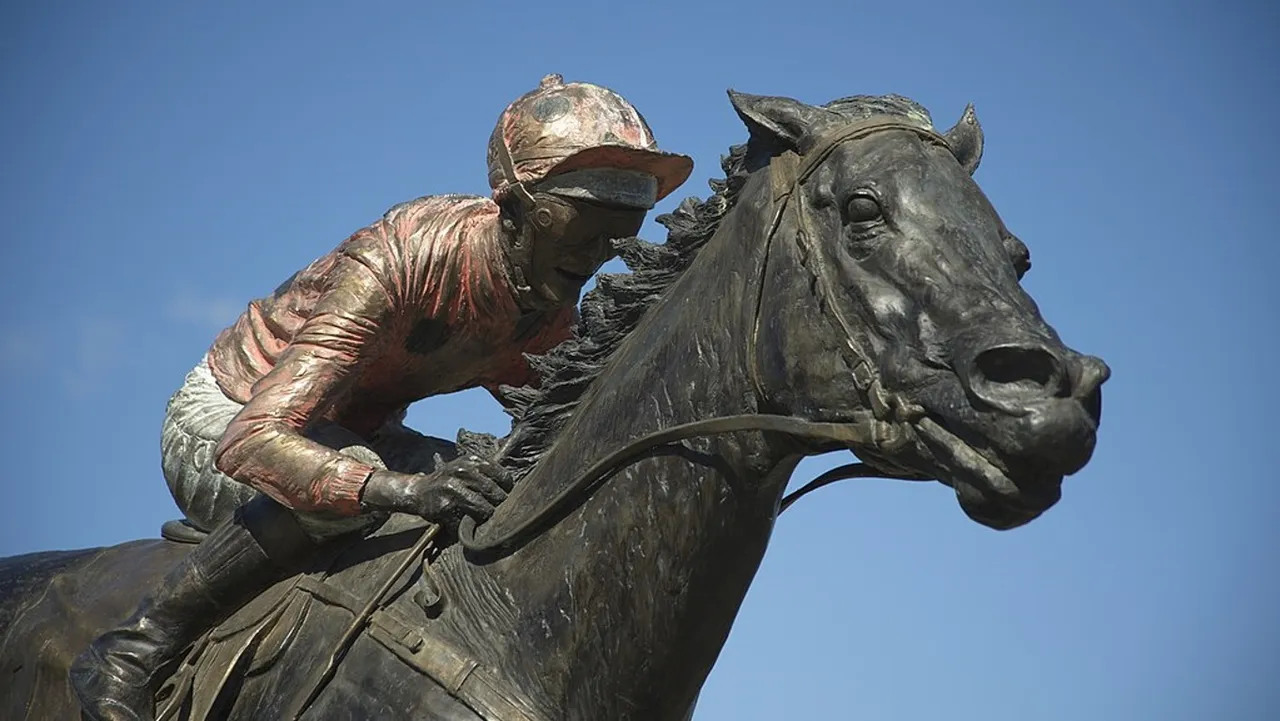
Source: Wikipedia
Race horses are bred for speed and stamina. Breeding is highly specialised. It is believed that 95% of all race horse descended from just one male horse (New Scientist). Breeding for speed and stamina is so specialised because the stakes are so high for the breeders. Winning races is highly lucrative. However, breeding for just a couple of particular traits comes at a cost to the horse. Race horses are prone to many types of illness. These include bleeding of lungs (Exercise-Induced Pulmonary Haemorrhage), stomach ulcers, and inflammatory airway disease (Horse Racing Kills).
Dogs
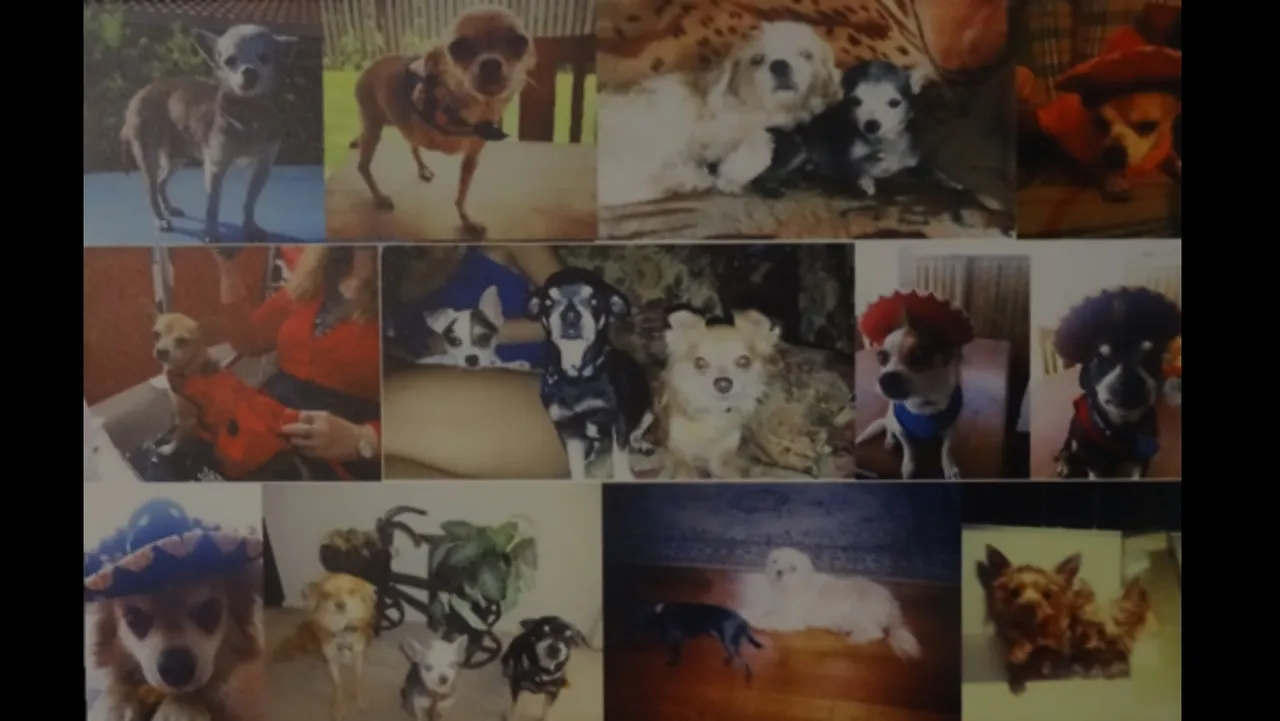
The species of dogs are bred almost entirely around human needs and wants. Depending on definitions, there could be as many as 400 breeds of dogs in the world. At some point, all of these dogs were bred for an intended purposes (e.g. Collies for vigilance, Rottweilers for aggression, and Retrievers for obedience) (Slate). Many of these purposes are no longer relevant or required but these breeds of dogs are continued to be bred as mostly pets. The specialised breeding of dogs has led to most breeds becoming vulnerable to various illness and disease. Table 1 lists 25 popular dog breeds and their most common ailments.
Table 1: Dog Breeds and Health Issues
| Dog Breed | Health Issues |
|---|---|
| Siberian Husky | Autoimmune Disorder |
| Bulldog | Respiratory Problems |
| Pug | Eye Problems |
| German Shepherd | Hip Dysplasia |
| Labrador Retriever | Obesity |
| Beagle | Epilepsy |
| Shih Tzu | Wobbly Kneecaps |
| Boxer | Cancer |
| Dachshund | Back Problems |
| Doberman Pinscher | Heart Condition |
| Cocker Spaniel | Ear Infections |
| Yorkshire Terrier | Portosystemic Shunt |
| Golden Retriever | Skin Allergies |
| Poodle | Glaucoma |
| Rottweiler | Joint Problems |
| Miniature Schnauzer | Diabetes |
| Chihuahua | Collapsing Trachea |
| Pomeranian | Hair Loss |
| German Shorthaired Pointer | Aortic Stenosis |
| Great Dane | Bloat |
| Shetland Sheepdog | Collie Eye |
| Maltese | Little White Shaker Syndrome |
| Boston Terrier | Cherry Eye |
| French Bulldog | Breathing Problems |
| Cavalier King Charles | Mitral Valve Disease |
Source: Fetch
Cross-breeding different breeds was once considered a method of reducing the likelihood of disease. However, a recent study indicates that cross-breeding likely increases the prevalence of diseases from both breeds (Dogs Naturally Magazine). Disease could be reduced through the cross-breeding of different species but not through the cross-breeding of different breeds.
What happens when or if we stop breeding animals?
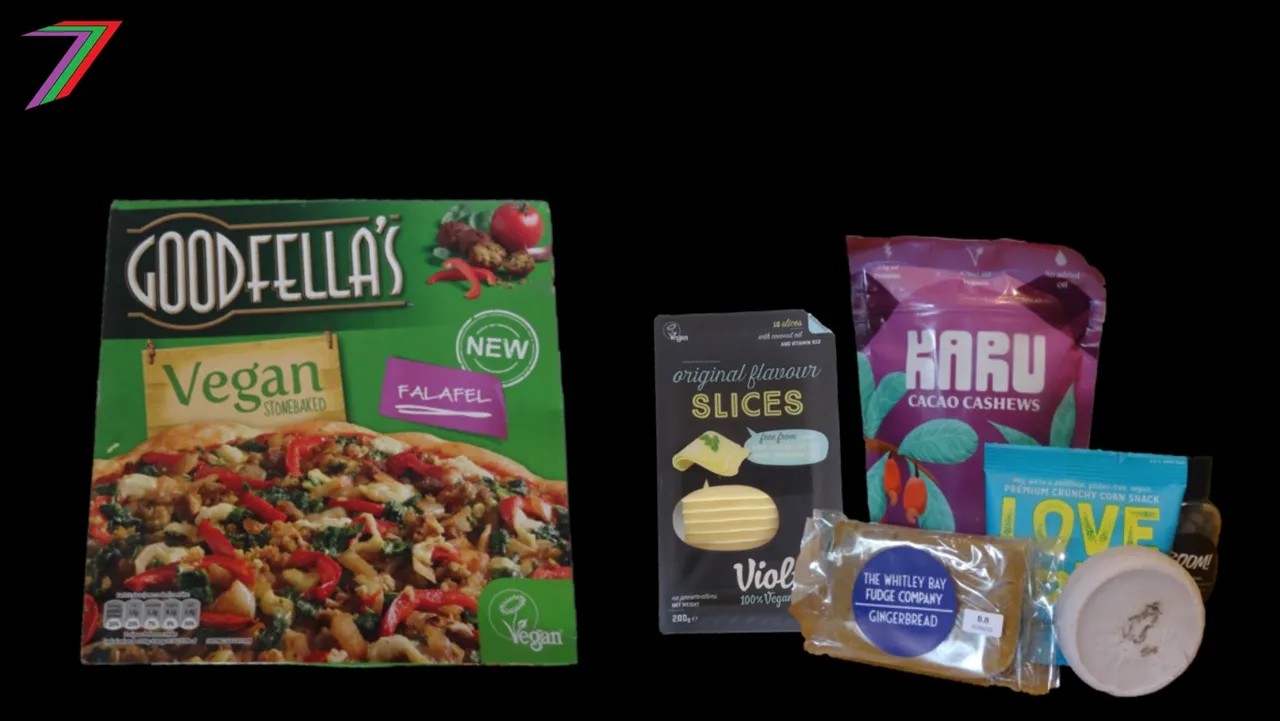
There are millions of different species of animals living on our planet. Humans have only been involved in the breeding of a very small percentage of these species. However, the overall impact of focusing on the breeding of this small group of species is enormous. This is because the number of animals bred by humans makes up a very high percentage of certain groups of animals. According to a 2018 study, approximately 60% of all mammals are livestock and 36% are humans. Therefore, only 4% of mammals live in the wild. Humans have caused the destruction of approximately 83% of wild mammals. A similar problem has occurred for birds. Approximately 70% of birds are poultry and only 30% of birds live in the wild (The Guardian).
Mammals
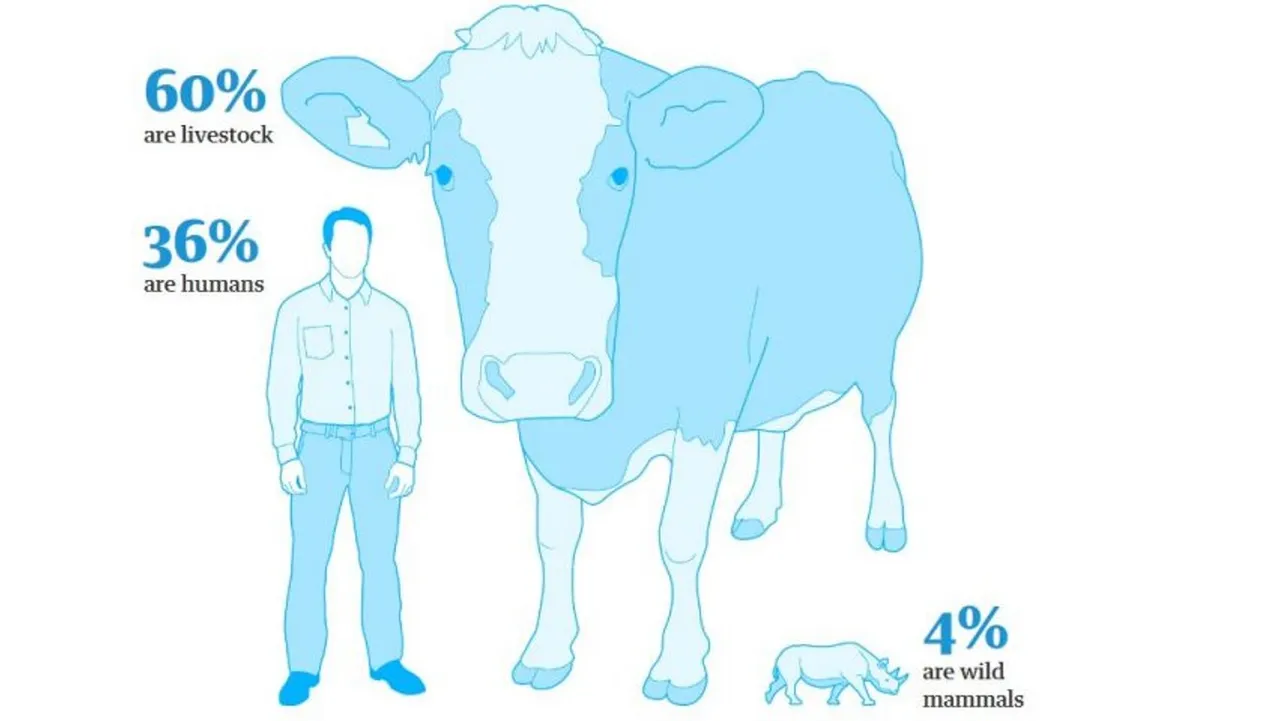
Birds
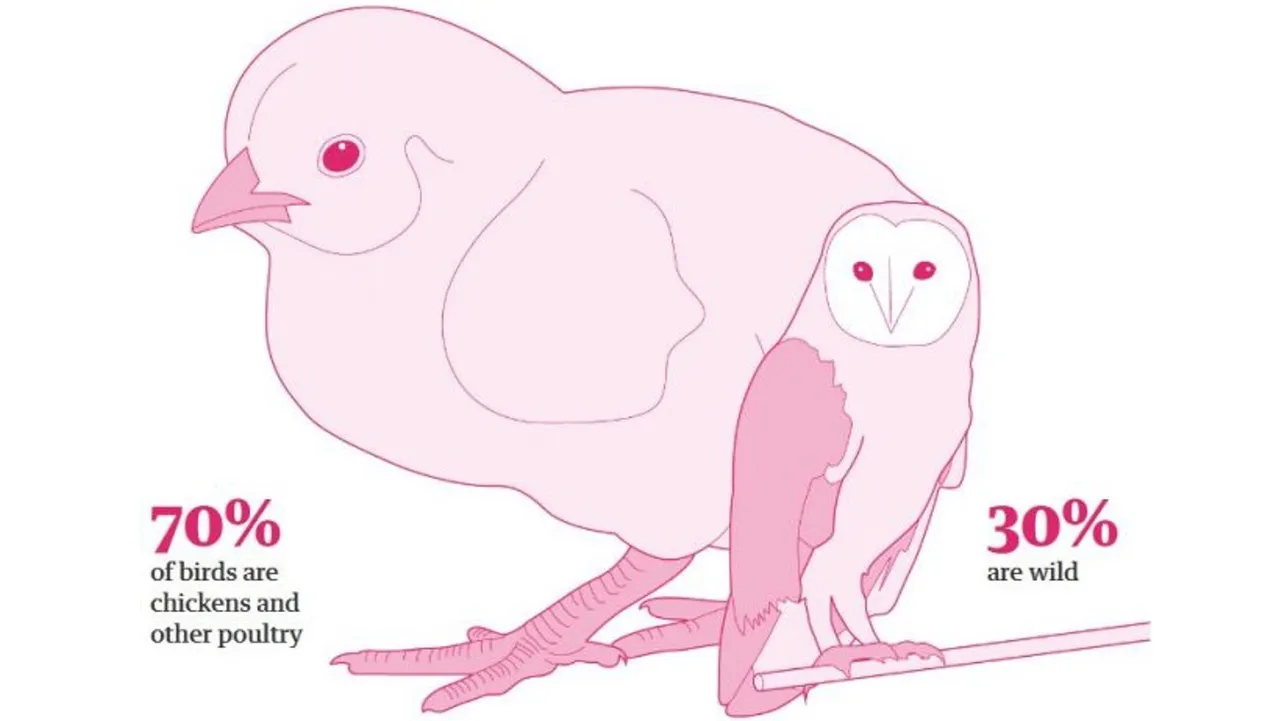
A large majority of existing mammals and birds in the world have been domesticated and bred for humans. This breeding as well as the altered environment caused by human activity makes it impossible for most human bred animals to ever be able to live in the wild again. Through breeding, the vast majority of mammals and birds have become dependent on humans to keep them healthy and alive.
What happens when humans no longer need these animals? This is most likely to occur when breeding them is no longer profitable. The rise of vegetarianism and veganism is causing the demand for livestock to fall. Pressure from animal rights advocates for better living conditions and treatment of animals is pushing cost of rearing animals higher. Competition from the creation of alternative plant-based and synthetic meats will pull more demand away from meat and dairy products. Eventually, many farms and breeders will no longer be profitable. What happens to the animals then?
The failing farms could be taken over by large farms. If the industry is failing it is unlikely that operations would continue as before. Buyers of the farms might be more interested in the property and land rather than the business. The animals would no longer be wanted. In my post Our relationship with other animals and the universal desire for freedom, I discuss the catastrophic consequences of mass releasing of domesticated animals into the wild. However, releasing most domesticated animals into the wild, even in small numbers, would be problematic. It would be difficult to find many places that these animals could be released where they would be able to survive on their own. Breeding has made them unsuitable to living in the wild. I do not know if breeding programs for the purpose of reintroduction into the wild is possible.
The animals could be adopted to live in sanctuaries. This could be possible if animal breeding businesses fail gradually to enable sanctuaries to handle the number. People could adopt them as pets if they have sufficient land and resources to care for them. However, the most likely outcome for many of these animals will be mass culling. It saves the businesses money and Governments would likely support it as other solutions are difficult and costly.
Manipulation of Human Genetics
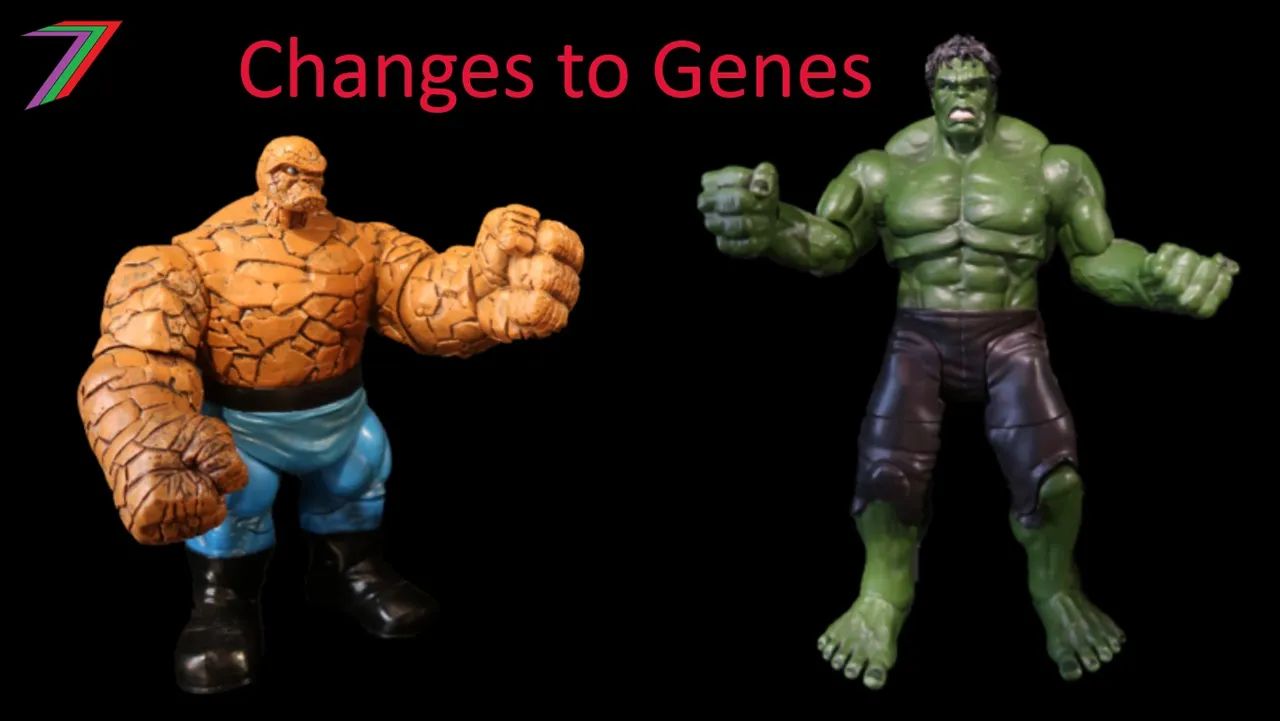
Humans have successfully manipulated the genes of animals through breeding and can potentially manipulated them further through genetic engineering. It is also possible for humans to manipulate the genes of other humans. This could have been done through breeding. Humans have taken other humans as slaves for thousands of years. This provides opportunities for slave owners and traders to breed slaves for work or profit. Incentive to breed slaves may have been lacking as humans take a long time (years) to mature to become productive slaves. Many civilisations that had slaves, obtained them from civilisation they had conquered. Therefore, breeding slaves may have been considered unnecessary.
According to Pritchett, J. B. (2017), slave breeding existed in the USA in the 19th century. His evidence is based on recorded accounts from former slaves and fertility rates of female slaves held by slave sellers. The results of his research were inconclusive in regards to the extent of slave breeding.
There does not appear to be any evidence that human breeding has created distinguishable breeds of humans. There are different races of humans but the differences between races are minor (e.g. slightly different bone shapes, densities, and body proportions). Increased human migration around the world is likely to reduce the chances that breeding or inadvertently limited breeding would change the human species. Instead, humans will and are becoming a mixture of races and ethnicities.
The bigger threat to changing human genetics is genetic engineering. The possibilities are potentially endless and technological advancements makes it easier. Unlike through breeding, genetic engineering has the potential to enhance capabilities without causing negative effects to other traits. Similar to how some forms of breeding has been used to control domesticated animals. genetic engineering could also be used as a means to control people. For examples, this could involve altering DNA to increase compliance or lower intelligence.
My Opinions
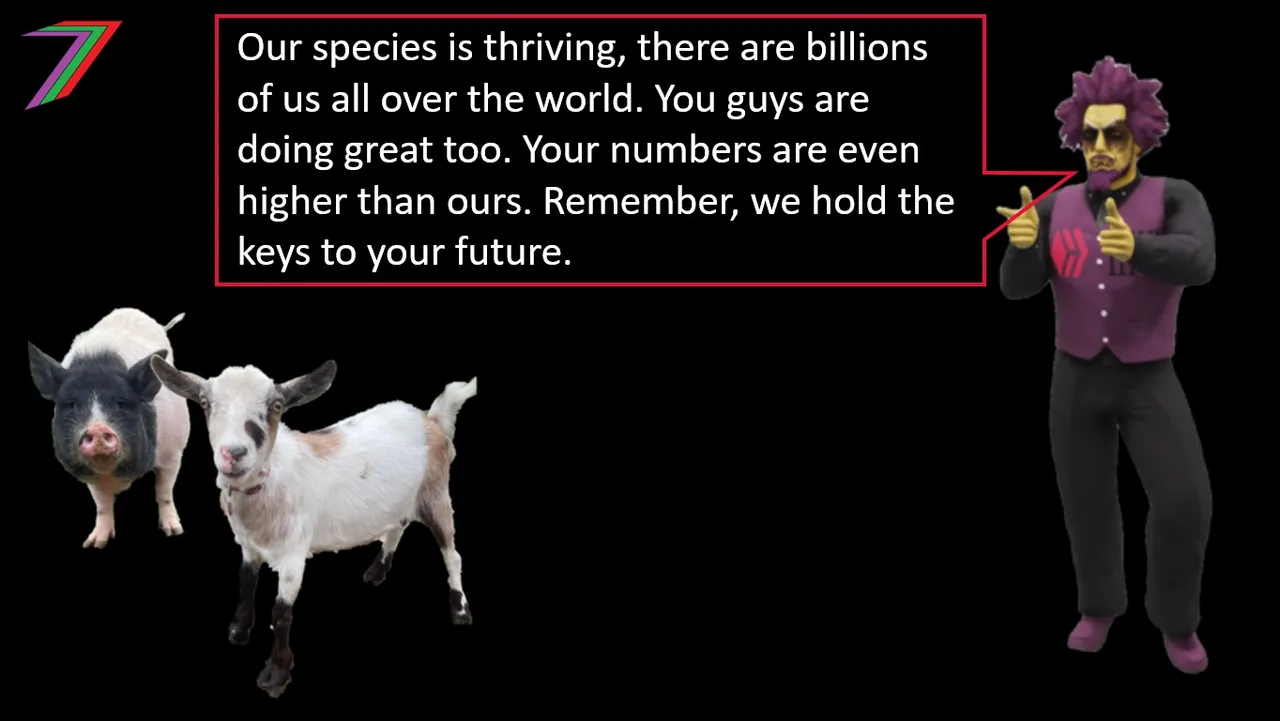
We, as humans, have manipulated almost everything around us for own purposes. This been done for our own personal gain. In many instances, this manipulation has been of great benefit to us. However, it is often to the detriment of other species and on occasions even backfired on us. If these problems affect us directly, there is strong incentive to resolve them. If these problems are indirect or mostly affect future generations, the incentive is weaker. Some people still attempt to address them, others pretend to address them, some downplay them, and others manipulate the causes of the problems to implement solutions for their own benefit.
Manipulation of nature and other animal species has come at a great cost to nature. Typically, humans pay little attention to this cost. They either struggle to perceive it or believe that it does not affect them. As long as the existence of these animals serves our purposes, meeting people’s needs and earning profit, the consequences of manipulation of animal genes through breeding are treated as irrelevant.
If businesses such as farming and/or animal breeding begin to fail; there is no longer a viable place for most of these animals. Many are likely to be culled. Very few of the domesticated animals will ever be able to live in the wild like their ancestors. They are incapable to do so and are dependent on humans for many things. I believe the best case scenario is the gradual decline of animal breeding industries. This would lead to a gradual but an eventual significant decline to the extent of breeding and the number of domesticated animals. Most of the remaining animals, because of the far smaller numbers, could move to sanctuaries with some of them becoming pets to people who are able to look after them.
More posts

If you want to read any of my other posts, you can click on the links below. These links will lead you to posts containing my collection of works. These 'Collection of Works' posts have been updated to contain links to the Hive versions of my posts.
Hive: Future of Social Media
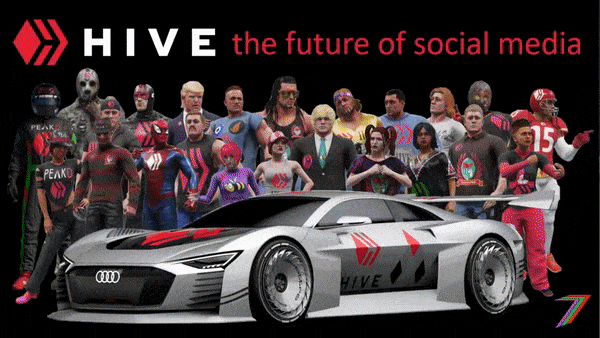
Spectrumecons on the Hive blockchain
